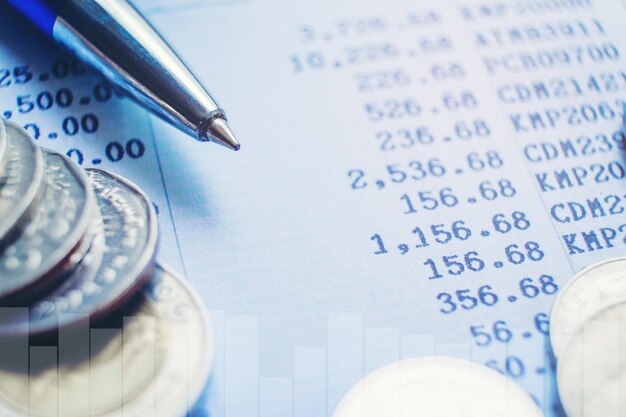Understanding Expense Ratios in ETFs: What You Need to Know
Exchange-Traded Funds (ETFs) have surged in popularity over the years as a flexible and often cost-effective investment vehicle. One crucial factor that potential investors must consider when evaluating ETFs is the expense ratio. Understanding this term is essential for making informed investment decisions and maximizing potential returns. But what exactly is an expense ratio, and why does it matter? Let’s delve into the details.
What is an Expense Ratio?
The expense ratio of an ETF represents the percentage of the fund's assets that go towards administrative, management, advertising, and other operational expenses. These costs are essential for the functioning of the ETF but can eat into returns if not managed correctly.
Components of the Expense Ratio
- Management Fees: A portion of the expense ratio compensates the fund managers who are responsible for the ETF’s investment decisions.
- Administrative Costs: These are for record keeping, customer service, and more.
- Operational Costs: This includes various trading expenses.
- Marketing Fees: Commonly referred to as 12b-1 fees, these are used to market and distribute the fund.
Understanding each component can help you see where your money is going and why it might be a worthwhile expense.
Why is the Expense Ratio Important?
The importance of the expense ratio cannot be overstated. Even seemingly small differences can compound over time, affecting your investment returns significantly.
Impact on Investor Returns
- Compounding Costs: If your ETF has a high expense ratio, it can significantly reduce your net returns, especially over longer investment horizons.
- Comparative Factor: Expense ratios provide a standardized measure to compare the cost-effectiveness of different ETFs focusing on similar asset classes or markets.
Considerations Beyond the Expense Ratio
While the expense ratio is an essential metric, it’s not the only factor to consider. Other elements, such as an ETF's performance history, the underlying asset class, and the investment strategy, are also pivotal.
How to Evaluate Expense Ratios
Evaluating the expense ratio involves understanding its direct and indirect impacts on your investments. Let’s explore some ways to effectively assess these costs.
Comparing Similar Funds
- Benchmark Against Averages: Compare the expense ratio of your chosen ETF with industry averages to determine if it’s competitively priced.
- Peer Comparison: Examine the expense ratios of ETFs that track similar indexes or asset classes.
Long-Term Considerations
- Compounded Impact: Calculate the potential long-term impact of the expense ratio on your investment returns. Tools and calculators are available that illustrate how a higher expense ratio can affect compounding over years.
Are Lower Expense Ratios Always Better?
While lower expense ratios can be beneficial, especially in passively managed index funds, they are not universally better. Higher expense ratios may be justified in actively managed funds where management aims to outperform the market, potentially leading to higher overall returns.
Pros and Cons of Low Expense Ratios
Pros:
- Higher Net Returns: Less money is deducted, leading to better net returns.
- More Predictable: Lower costs can make your investment outcomes more predictable when markets are stable.
Cons:
- Limited Management: Lower expense ratios often indicate passive management, which may not perform as well during volatile market conditions.
Navigating the ETF Landscape: Practical Tips
Investors should weigh many factors beyond the simple percentage number attached to an expense ratio. Here’s how to navigate these waters wisely.
🏆 Tips for Evaluating ETFs
- Understand Your Goals: Align ETF choices with personal financial goals and risk tolerance.
- Review Total Costs: Include trading fees and potential tax implications alongside the expense ratio.
- Monitor Regularly: Periodically review your ETF holdings as costs can vary over time.
Factors Influencing ETF Expense Ratios
Expense ratios are influenced by several variables, including the type of investments, market conditions, and the fund's investment strategy.
Types of ETFs and Their Expense Ratios
- Equity ETFs: Often have moderate expense ratios since they passively track indexes.
- Bond ETFs: May carry even lower expense ratios due to predictable returns.
- Commodity ETFs: Might have higher expense ratios due to storage and other unique costs.
- Actively Managed ETFs: Typically have higher expense ratios reflecting the cost of active management strategies.
Understanding which type of ETF fits best within your portfolio framework is crucial to aligning your investments with your financial strategy.
Summary: Key Takeaways on Expense Ratios 📊
- Know What You're Paying For: An expense ratio covers all operational costs, and understanding this breakdown can inform your investment strategy.
- Consider the Long-Term Impact: Even marginally lower expense ratios can lead to significantly enhanced returns over time due to compounding.
- Balance Cost with Value: Sometimes, a higher expense ratio can be justified if it aligns with your investment goals and offers value through performance or strategic advantages.
Key Takeaways:
- 🔄 Consistent Review: Regularly evaluate both new and current ETFs against their expense ratios as costs can change.
- 💡 Strategic Alignment: Align ETF selections with your financial goals, considering cost as one of several factors.
- 🔍 Detailed Analysis: Before selecting an ETF, analyze its expense ratio in the context of other costs and investment strategy.
Making Informed Choices: Your Path Forward
Understanding expense ratios is essential for making informed investment decisions. It’s crucial to consider these fees in the context of your broader financial strategy and investment goals. Whether you're a seasoned investor or new to ETFs, taking the time to understand how expense ratios impact your financial future will empower you to make smarter, more profitable investment choices. By consistently evaluating these ratios and seeking value beyond costs, you can navigate the complex landscape of ETFs with increased confidence and clarity.
